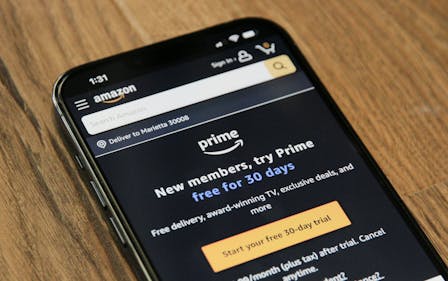How a Beauty Brand Proved Amazon Could Accelerate Growth Without Cannibalizing D2C
THE CHALLENGE
A fast-growing beauty brand wanted to scale their Amazon presence but feared the move would undermine their direct-to-consumer (D2C) business. The concern: channel cannibalization. Could Amazon truly be additive, or would it divert valuable D2C customers?
They needed a partner that could answer this question with data, not assumptions, and guide a path to sustainable, cross-channel growth.
FRONT ROW’S APPROACH
We partnered with the brand to conduct a detailed Amazon Marketing Cloud (AMC) study, comparing ad-exposed audiences and Amazon purchasers against the brand’s D2C customer list.
Our methodology included:
- AMC-based overlap analysis across Sponsored Products (SP), Sponsored Brands (SB), and Sponsored Display (SD)
- Segmentation of new-to-brand vs. repeat customers on Amazon
- Cohort-based incrementality assessments
- MAP enforcement and pricing governance to protect D2C brand equity
We also layered in Front Row’s proprietary modeling to measure channel lift and evaluate incrementality by audience segment and product line.

We went beyond surface-level metrics to uncover deep audience insights. Leveraging AMC and our proprietary lift modeling framework, we segmented audiences with precision, revealing that Amazon not only drove incremental growth but also attracted entirely new customer cohorts with virtually no overlap to D2C. Powered by our award-winning Catapult software, we’re recognized as one of the world’s leading providers of AMC-driven strategy and insights.
THE RESULTS
Amazon didn’t cannibalize D2C at all. It supercharged the brand’s growth engine:
- <0.01% overlap between Amazon purchasers,ad exposed shoppers and D2C customer
- 93.4% of Amazon purchasers were new-to-brand vs. 86.8% on D2C
- 2.75x more customers acquired on Amazon than D2C
- Amazon drove 2x the number of orders, despite a lower repeat rate (1.33 vs. 1.83)
The data made it clear: Amazon operated as a discovery engine, helping brands achieve holistic growth. This is the result of our Connected Commerce philosophy in action, which we’ll explore in greater detail below.


WHY IT MATTERS
For brands debating whether to lean into Amazon, this case offers a clear answer. Marketplace expansion doesn’t have to come at the expense of D2C. With the right strategy, Amazon can be a complementary engine for new customer acquisition while leaving your core D2C audience untouched.
With 77% household penetration in the United States, Amazon is an amazing discovery platform for brands. No matter how big your D2C customer base, Amazon's 180 million Prime Members means you're guaranteed to reach customers who aren't on your email list.

CONNECTED COMMERCE IN ACTION
Despite the misconception, Amazon is fueling D2C. The fear that Amazon undermines D2C stems from an outdated view of consumer behavior. Today’s beauty shopper doesn’t move in a funnel, but rather in flows. From TikTok to Google, YouTube to Amazon, consumers bounce between touchpoints in search of convenience, trust, and authenticity.
That’s the essence of Connected Commerce: a unified brand experience that mirrors how real people shop.
And in this case, Amazon proved to be a crucial part of that journey, not a replacement for D2C, but an accelerant of it.

of beauty sales close on Amazon, even though 57% of journeys start elsewhere
of beauty shoppers report buying on Amazon after seeing a product on social
of branded Amazon searches are driven by off-Amazon media, like influencers, ads, or editorial
According to the data, Amazon is completing the customer journey, not interrupting it. The marketplace gives shoppers a trusted, fast, and familiar way to purchase after discovering the brand elsewhere. And thanks to our channel governance and audience insights, we were able to protect D2C equity while using Amazon as a scalable engine for discovery.
This is what modern growth looks like: not isolated channels, but one connected ecosystem. Amazon, D2C, social, and retail; not competing but compounding.
Interested in learning more about our Amazon Management capabilities?
